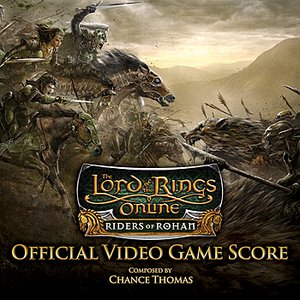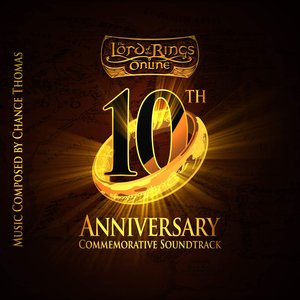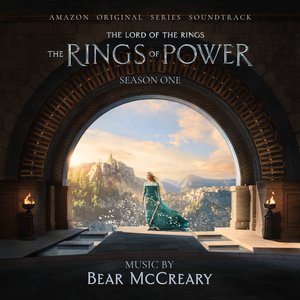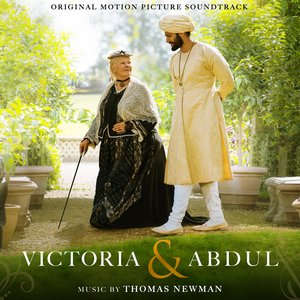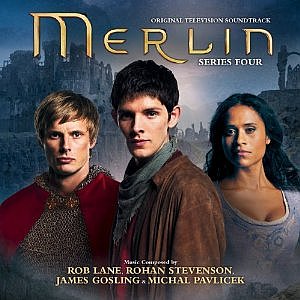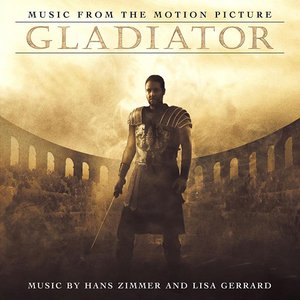Wiki
The Fellowship comes ashore at Amon Hen, but Frodo has gone missing… as has Boromir. The History theme appears again in a snaky violin setting, taunting the listener. Will the Ring again be changing hands? In a moment of weakness, Boromir does in fact try to take the Ring, and by his desperate act, merits the vicious music of Mordor. Shore allows obsessive variations on the Hobbit Skip Beat and the Mordor Skip Beat patterns to confront one another—for Frodo will soon surrender to his personal weaknesses and slip the Ring on to escape his pursuer. Boromir’s regret is instantaneous. He realizes that he has given in to his fear and desire, and the four note Fall of Men motive makes its final appearance. This is not the first time a Man has been overpowered by the desire to claim the Ring.
Frodo reappears, only to be met by another Man: Aragorn. Will he too be tempted? The Ring’s Seduction theme calls to him, but the Heir of Elendil refuses, muting the theme by wrapping the Ring in Frodo’s hand and hiding it from his sight.
Frodo’s sword, Sting, glows blue—the Orcs have arrived! Aragorn, having refused the Ring now turns to protect Frodo, and thus earns his true heroic theme, the fully formed Heroics of Aragorn melody. Below this powerful theme another shape takes form, a plodding mechanical beating in five in piano and timpani. As the pulsing continues to grow, the Five Beat Pattern emerges and the Fellowship meets the figure face-to-face for the first time. “This is carefully done to match the action, the beats of the scene and Aragorn’s role in it all,” Shore explains. “It’s like Weathertop, in terms of the way the music is used.”
Soon Amon Hen is “fair teeming” with Uruk-hai, and the roaring Isengard theme pronounces their dominance. The music wrenches with the tones of metal percussion, mixed chorus and rough low brass. “I wanted to score these scenes in a primal way,” says Shore. “They had to have a brutality to them.” The Orc Crawl answers the first half of Isengard, further encouraging the musical rage until, with a dead stroke of low brass, anvil, bell plates, struck piano, bass drum, timpani and taiko, Boromir is pierced with an arrow.
UNUSED CONCEPT:
Another of the score’s alterations effects this piece. Originally the second appearance of the Fall of Men motive continued to develop, leading to a short but brutal quote of the Ringwraith music, played when Frodo dons the Ring and experiences a nightmarish vision of Barad-dûr. In the film the music is dissolved shortly after the four pitches of the Fall of Men.
TEXTS
THE SEDUCTION OF THE RING
Text from J. R. R. Tolkien
Quenya Translation by David Salo
FIRST HEARD: DISC TWO | TRACK TEN
I tuo, i macil – | The strength, the weapon –
Astaldaron mauri. | The needs of the valiant.
Nai corma macilya | Be the ring your weapon
A lelyat túrenna! | Go to victory!
THE DEATH OF BOROMIR
PART ONE
Text by J. R. R. Tolkien
Sindarin Translation by David Salo
FIRST HEARD: DISC THREE | TRACK FIVE
Ú-velin i vegil an eigas | I do not love the bright sword for its sharpness
Egor i bilin a linnas | Nor the arrow for its swiftness
Egor i vaethor an aglar | Nor the Warrior for his glory
Melin i mar i beriar. | I love the homeland which they defend.
INSTRUMENTS
THE ORCS
The Orcs’ unique instruments are particularly important to this base and uncivil race. Here Shore repre-
sents the ferocity and anger that melody would be far too eloquent to articulate. The Five Beat Pattern is designed to showcase these joltingly sharp industrial tones of pounded metal and stretched skins.
ANVIL
Listening Example: Disc Three | Track Five| 8:53
The anvil, which in construction is little more than a thick block of metal struck with a metal hammer, is a colorful member of the percussion family that has slowly crept its way into the world of orchestral music. Originally derived from the blacksmith’s workplace, composers have used the anvil in operatic works such as Verdi’s Il Trovatore and Wagner’s Ring des Nibelungen, which calls for 18 tuned anvils. Edgard Varèse used the anvil in Ionization to evoke a hardened, industrialized palette of sound.
BELL PLATE
Listening Example: Disc Two| Track Two| 1:27
Bell plates are similar to anvils, but they constructed of comparably thinner sheets of metal, and are generally suspended when played.
CHAINS AND PIANO WIRES
Listening Example: Disc Two| Track Two| 2:36
The music of composer Henry Cowell (1897–1965) brought to the general public daring new ideas in piano performance techniques. In works such as Aeolian Harp and The Banshee, Cowell called for the pianist to reach inside the piano and strike the strings inside. Shore’s Orc music follows in this tradition, as he requires his pianist to violently strike the wires inside the instrument with metal chains.
TAIKO DRUM
Listening Example: Disc Two| Track Ten| 2:37
These ancient drums, which have been used in Japanese music for over a millennium, exist in four basic sizes. The rich, rumbling tone of the drum was associated with the power of the gods in traditional Japanese culture, and the drum was used on the battlefield to strike fear into the hearts of enemies. It serves much the same purpose in the music of the Orcs where its pounding, unforgiving tone represents their brutal force.
© The Annotated Score (The Music of The Lord of the Rings Films)
Track descriptions on Last.fm are editable by everyone. Feel free to contribute!
All user-contributed text on this page is available under the Creative Commons Attribution-ShareAlike License; additional terms may apply.


